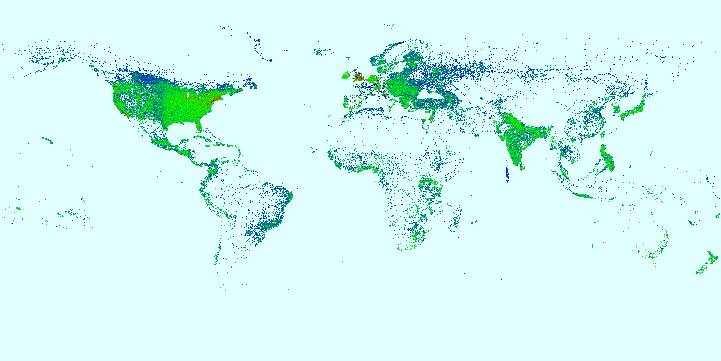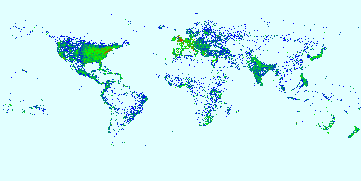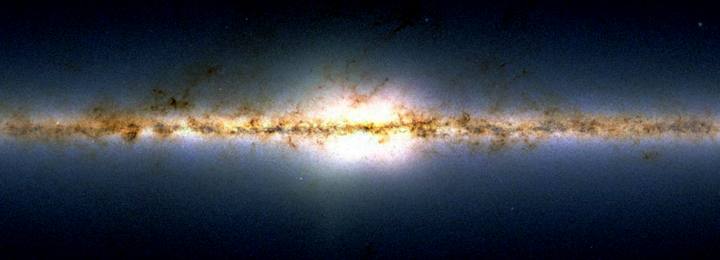
Monday marked the one year anniversary of our tiny friends demotion from planet-hood.
While this was a sad day I understand and agree with the decision completley. I even bought this --> shirt from my friends at
Threadless to commemorate the occasion.
See, the major problem is that Pluto's orbit is too eccentric. While other planets orbit the sun pretty close to the ecliptic, Pluto is almost 17 degrees off. If you would imagine an cantaloupe, for instance, lying in small depression on the ground. This is the sun. The other eight planets are from the size of pebbles to maybe, say, a small tomato (for Jupiter) in various places on the ground around the "sun." Now imagine you are lying down on your stomach looking at our playground solar system. Pluto would be largish dust mote somewhere above your head, spinning about the sun once every 247.9 Terran years. It's way out of line with regards to the rest of the planets.
Another problem is with Pluto's largest "moon," Charon. Technically Charon and Pluto make up what is known as a binary system due to the fact that they rotate each other. Their barycentre (center of gravity) is actually above either body's surface (although quite a bit closer to Pluto) and they are tidally locked. So, if you were to hang out in spaceship between the two, it would appear that both Pluto and Charon would spin around your ship always with the same surface always facing you.
Anyway, with these reasons and others; including what kicked off this whole debate in the first place, the discovery of many other Pluto sized objects outwards of the
Neptunian orbit; scientists, in 2006, from the International Astronomical Union redefined what it means to be a planet and kicked the old boy out. It was a pretty good run, I think, for being such an odd-ball to begin with and everyone should be satisfied by the decision. Our solar system is now a happy and uniform family with (currently) 8 planets and 3 "dwarf planets"; Pluto not even being the largest of these.
While Pluto was still a planet,
NASA launched the
New Horizons mission to what, at the time, was the only unexplored planet in the Solar System.
 Voyager 1
Voyager 1 had a shot at a Pluto flyby but the mission controllers opted at that time to have it explore the
Saturian moon Titan. Not a bad plan overall, since
Voyager's trip partially lead to the more recent mission of
Cassini–Huygens which proved Titan to be the only other body in the Solar System to have stable bodies of surface liquid (very cool, but off topic). Anyway...
New Horizons was launched (as the fastest vehicle to date) in early 2006 to examine Pluto, it's three moons, and possibly other
Kuiper Belt objects in the vicinity. It should arrive at Pluto on July 14, 2015; coming within
approximately 6,200 miles of the surface and travelling roughly 30,000 miles per hour.
It was also confirmed by NASA, that the launch contained a portion of Pluto's discoverer's ashes. Yup, that is right. Enjoy your flight Mr. Tombaugh. We can all only dream of our ashes making the journey home to the stars.
"It may be that the old astrologers had the truth exactly reversed, when they believed that the stars controlled the destinies of men. The time may come when men control the destinies of stars". - Arthur C. ClarkeThe only question that then remains is one of mnemonics: Now that
My
Very Educated Mother
Just Served Us
Nine Pizzas no more, just what is she going to do?
 Today the literary world mourns the passing of one of the greats, Norman Kingsley Mailer. Mailer was known for a great many works; he received the Pulitzer prize twice, the National Book Award once, and just two years ago was awarded the Medal For Distinguished Contributions To American Letters. Some of his many works include "The Naked And The Dead", his first big novel that launched his name throughout the American conscious, a tale of Mailer's experience in World War II; "An American Dream"; "Armies Of The Night";"Of A Fire On The Moon"; "Ancient Evenings"; "The Executioner's Song"; and his most recent, "The Castle In The Forest" a story of Adolf Hitler's childhood, as seen through the eyes of a demon.
Today the literary world mourns the passing of one of the greats, Norman Kingsley Mailer. Mailer was known for a great many works; he received the Pulitzer prize twice, the National Book Award once, and just two years ago was awarded the Medal For Distinguished Contributions To American Letters. Some of his many works include "The Naked And The Dead", his first big novel that launched his name throughout the American conscious, a tale of Mailer's experience in World War II; "An American Dream"; "Armies Of The Night";"Of A Fire On The Moon"; "Ancient Evenings"; "The Executioner's Song"; and his most recent, "The Castle In The Forest" a story of Adolf Hitler's childhood, as seen through the eyes of a demon.



 All of them sitting down with the laptop in my, well... lap and giving me suggestions like "Now! You've just noticed the most sought after book on your wishlist has just become available!" and "Reach for that Orwell like you are cataloging it to be given away" (as if I'd ever give George's complete works out!). It was quite strange to say the least. He kept talking and taking pictures until he thought I finally was relaxed and natural enough to get some good shots. After telling us about how Chicago is nothing more than Grand Rapids writ large and to get real culture you have to go to London or Tokyo he started packing up his bags and took off. Before he left he assured me the photos would appear on the Times website at the very least and probably in the paper too. I had my doubts.
All of them sitting down with the laptop in my, well... lap and giving me suggestions like "Now! You've just noticed the most sought after book on your wishlist has just become available!" and "Reach for that Orwell like you are cataloging it to be given away" (as if I'd ever give George's complete works out!). It was quite strange to say the least. He kept talking and taking pictures until he thought I finally was relaxed and natural enough to get some good shots. After telling us about how Chicago is nothing more than Grand Rapids writ large and to get real culture you have to go to London or Tokyo he started packing up his bags and took off. Before he left he assured me the photos would appear on the Times website at the very least and probably in the paper too. I had my doubts.  Okay, they can't all be about science, my cats and kittens. Today I'm going to tell you why BookMooch is pretty much the best things to happen to books since Gutenberg (and LibraryThing). I'll get back to the science next time (thinking about a discourse on Saturn's moon Titan, maybe? Or the Voyager deep space article I was working on?)
Okay, they can't all be about science, my cats and kittens. Today I'm going to tell you why BookMooch is pretty much the best things to happen to books since Gutenberg (and LibraryThing). I'll get back to the science next time (thinking about a discourse on Saturn's moon Titan, maybe? Or the Voyager deep space article I was working on?) Books 1 & 2 of 4 book epic techno/fantasy called Otherland) - The Eyes of the Dragon, Different Seasons and Storm Of The Century, three by
Books 1 & 2 of 4 book epic techno/fantasy called Otherland) - The Eyes of the Dragon, Different Seasons and Storm Of The Century, three by  A few of them, even more. The coolest part about this whole business is that almost all of these books are hardcover first eds. Those 8 Asimov books I mooched? Special collector editions, absolutely beautiful! And they go for $30-60 a piece on Amazon.
A few of them, even more. The coolest part about this whole business is that almost all of these books are hardcover first eds. Those 8 Asimov books I mooched? Special collector editions, absolutely beautiful! And they go for $30-60 a piece on Amazon. Monday marked the one year anniversary of our tiny friends demotion from planet-hood.
Monday marked the one year anniversary of our tiny friends demotion from planet-hood. Voyager 1 had a shot at a Pluto flyby but the mission controllers opted at that time to have it explore the
Voyager 1 had a shot at a Pluto flyby but the mission controllers opted at that time to have it explore the 









